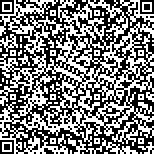|
|
| |
|
|
| 本文已被:浏览 998次 下载 616次 |

码上扫一扫! |
|
|
| 南海的浮游桡足类Ⅰ. |
|
陈清潮1, 章淑珍2
|
|
1.中国科学院海洋研究所;2.中国科学院南海海洋研究所
|
|
| 摘要: |
| 桡足类是海洋浮游动物中的主要类群,由于它分布广,种类多,数量大,并且营养价值高,常为许多经济鱼类的重要饵料。无论从渔业海洋学或从海洋生态学的角度来看,无疑地,它占有很重要的地位。因此,对这一类群进行分类和生态学的研究,是具有重要意义。
关于南海的浮游桡足类,过去虽有一些零星记载,但尚缺乏系统的调查。国外方面:1883年英国Challenger号调查船,曾在香港东南外海做过2个站的采集,由Brady(1883)记载过1个种;1888年Giesbrecht曾记载过香港的哲水蚤14种;1908年美国Albatross号调查船,曾在同一地区做过6个站的采集,由Wilson(1950)报导过150种,其中哲水蚤占108种;1955-1957年Rose曾报导过越南芽庄近岸浮游生物名录并记载哲水蚤类1个新科、1个新属和3个新种;1957年日本Soya号调查船,在第2航次往南极考察时,途经南海曾做过1个站的采集,由Tanaka(1960)记载过16种,其中哲水蚤占5种;1959-1960年美国Stranger号等调查船曾在南海西南作过浮游生物采集;1961年Wickstead报导过包括分布于南海南部(4°N)7个站哲水蚤90种:1971年Bowman记载过包括分布于香港的1个哲水蚤新种。国内方面:1963年沈嘉瑞与李茯香,报导过广东雷州半岛鉴江口与湛江港的哲水蚤20种;1965年郑重等的《中国海洋浮游桡足类》一书中,记载有17种采于南海,提到有49种在南海有分布记录,其中哲水蚤44种。综合以上国内、外的研究,除同物异名外,整个南海共记载过哲水蚤163种左右。
作者对1959-1960年以来海洋研究所在南海进行海洋调查所采得的样品进行分析研究结果表明,这一海区浮游桡足类的种类相当丰富,它们的分类研究报告将按目科陆续分篇发表。
本文是南海哲水蚤目的第一部分,共记载45种,分隶于4科,计哲水蚤科(Calanidae)9种,真哲水蚤科(Eucalanidae)11种,拟哲水蚤科(Paracalanidae)19种,伪哲水蚤科(Pseudocalanidae)6种。文中报导1新种Calocalanus monospinus sp. nov. (Paracalanidae)和9种本海区首次记录(属真哲水蚤科者1种,拟哲水蚤科者5种,伪哲水蚤科者3种)。凡属作者(1965)在黄、东海报导过的种类,其形态特征的描述,均行省略。本文承沈嘉瑞、刘瑞玉和郑执中教授提出许多宝贵意见,作者特致以衷心谢意。 |
| 关键词: 浮游桡足类 哲水蚤目 |
| DOI: |
| 分类号: |
| 基金项目:中国科学院海洋研究所调查研究报告第334号 |
|
| The Pelagic Copepods of the South China Sea Ⅰ. |
|
CHEN QING-CHAO1, ZHANG SHU-ZHEN2
|
|
1.Institute of Oceanology, Academia Sinica;2.South China Sea Institute of Oceanology, Academia Sinica
|
| Abstract: |
| The present paper deals with the pelagic copepods collected during 1959-1960, chiefly from the northern part of the South China Sea ranging. from the Hsi-sha Islands to the coastal waters of Kwangtung and southern Fukien, including the surrounding waters of Hainan Island. Results of our systematic studies on the material obtained will be published in a series of paper. This is the first part of Calanoida, enumerating 48 species, belonging to four families, with 9 species of Calanidae, 11 species of Eucalanidae, 19 species of Paracalanidae and 9 species of Pseudocalanidae. Calocalanits monospinus of Paracalanidae is described as new to science and 9 other species (marked each with an asterisk in the list to species) are new records from China Seas. |
| Key words: Pelagic Copepods Calanoida |
|


